Gyrocopters have been around for nearly a century, yet many people still don’t understand how they work. A gyrocopter, also known as an autogyro, is a type of aircraft that utilizes both rotor and fixed wing technology to fly.
Contents
The key components of a gyrocopter are the rotor, which provides lift, and the fixed wing, which provides stability and direction. So, how does a gyrocopter work exactly?
The rotor is not powered by an engine like a helicopter’s rotor, but instead rotates freely as the gyrocopter moves forward. This creates lift and allows the gyrocopter to take off and remain in the air.
The fixed wing, on the other hand, provides stability and allows the gyrocopter to move in a specific direction, much like an airplane.
Gyrocopters operate based on the principles of autorotation, meaning the rotor rotates due to the airflow passing through it.
The speed and direction of the rotor determine the lift generated and control the gyrocopter’s altitude and speed. The engine powers the propeller, which is responsible for providing forward movement and control.
Key Takeaways:
- A gyrocopter is a type of aircraft that utilizes both rotor and fixed wing technology.
- The rotor provides lift, while the fixed wing provides stability and direction.
- Gyrocopters operate based on the principles of autorotation.
- The engine powers the propeller, which provides forward movement and control.
- The speed and direction of the rotor determine the lift generated and control the gyrocopter’s altitude and speed.
Understanding Gyrocopters: An Overview
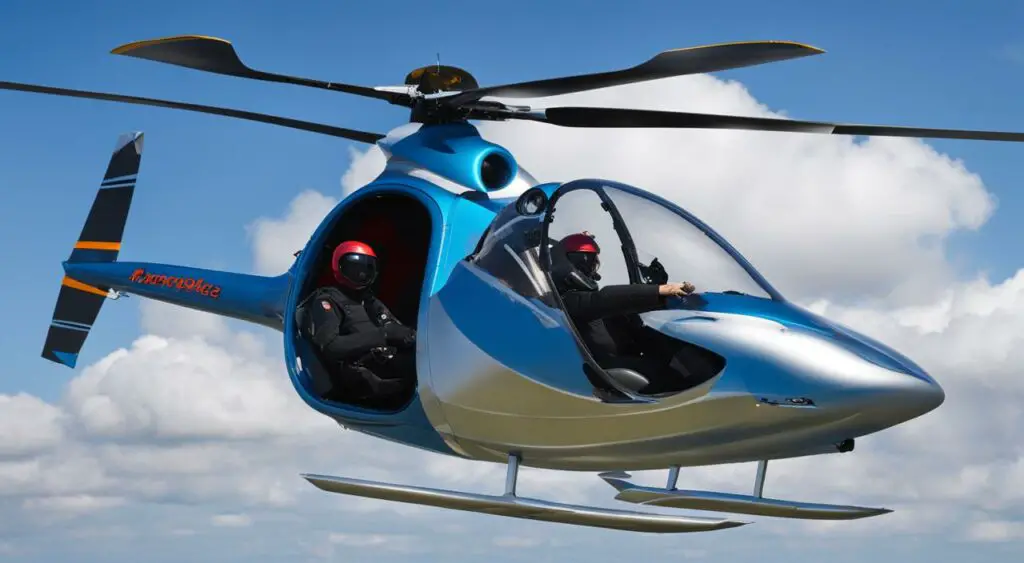
Gyrocopters, also known as gyroplanes or autogyros, are a type of rotary wing aircraft that utilize angular momentum to achieve lift and flight.
Unlike traditional helicopters that use a powered rotor to generate lift, gyrocopters use a non-powered rotor that is driven by aerodynamic forces.
This means that the rotor is not connected to the engine, but rather spins freely through the air, being auto-rotated by the flow of air as the gyrocopter moves forward.
This unique design allows gyrocopters to achieve a number of advantages over other aircraft, including efficient and stable flight at lower speeds, as well as a short takeoff and landing distance.
Gyrocopters are also significantly less expensive to operate and maintain than traditional helicopters, making them a popular choice for hobbyists and enthusiasts.
The history of gyrocopters dates back to the early 20th century, with pioneers such as Juan de la Cierva, who developed the first successful autogyro in 1923.
Since then, gyrocopters have undergone significant advancements in technology and design, making them a viable option for a range of applications, from recreational flying to agricultural operations and law enforcement.
Gyroplane vs. Helicopter
While gyrocopters and helicopters share some similarities in their ability to achieve vertical flight, there are significant differences in their design and operation.
Helicopters use powered rotors to generate lift and propulsion, while gyrocopters rely on unpowered rotors and forward momentum to achieve lift and propulsion.
Another key difference is that gyrocopters, due to their design, are unable to hover in one place like helicopters can.
They require a certain amount of forward motion to generate lift and remain in the air.
However, gyrocopters are able to perform a unique maneuver known as autorotation, which allows them to safely land in the event of an engine failure.
The Role of Angular Momentum
One of the key principles behind gyrocopters is the utilization of angular momentum to generate lift.
When the rotor blades of a gyrocopter are spun up or accelerated, they create a differential angle of attack between the advancing and retreating blades.
This difference in angle of attack creates a force, called lift, which allows the gyrocopter to rise into the air.
The rotational energy of the rotor is maintained by the forward motion of the gyrocopter, which provides the necessary airflow to keep the rotor blades spinning.
This unique design allows gyrocopters to achieve efficient and stable flight, even at low speeds.
Gyrocopter Classifications
There are several classifications of gyrocopters, including open cockpit, enclosed cockpit, and tandem seating configurations.
The open cockpit design is the most traditional type, with a single-seat pilot and the rotor assembly mounted on top of a tall pylon.
Enclosed cockpit gyrocopters provide greater protection from the elements, and typically have two seats. Tandem seating configurations are designed for two occupants, with one seat positioned behind the other.
Gyrocopters are also classified based on their weight and power, with smaller models being used for recreational flying and larger models being used for commercial applications.
As gyrocopters continue to evolve in both design and technology, they are becoming an increasingly popular choice for a range of applications, from personal transportation to emergency response.
Gyrocopter Flight Dynamics: Lift and Propulsion
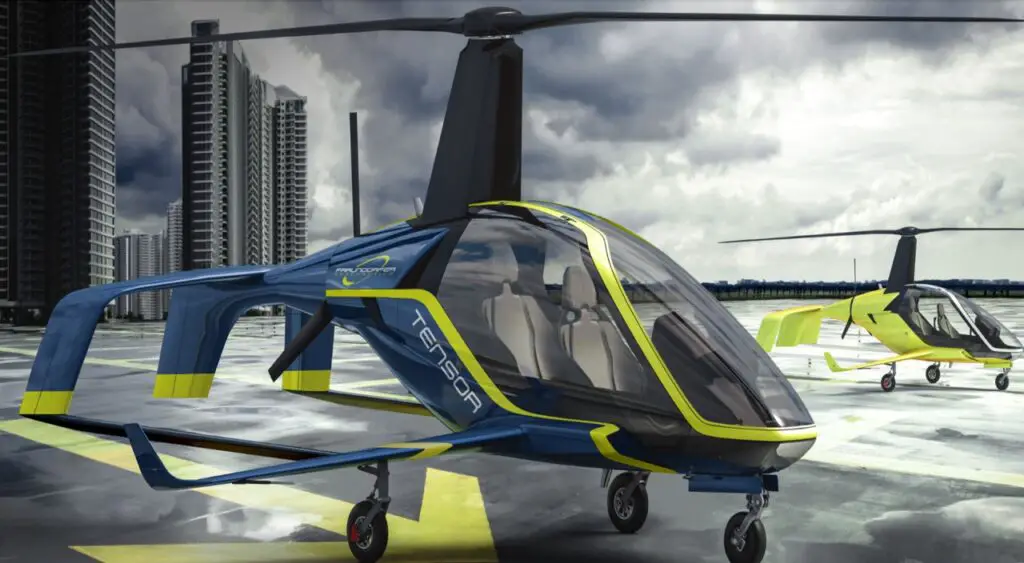
In order to understand how a gyrocopter works, it is important to examine its flight dynamics, which include the mechanisms that allow for lift and propulsion.
Unlike fixed-wing aircraft, gyrocopters rely on a rotor in order to generate lift. The rotor is mounted on top of the gyrocopter and is always in motion during flight.
As the blades of the rotor spin, they create lift by generating air pressure and directing it downwards.
The gyrocopter’s rotor is not powered by an engine, but rather it spins freely in response to the airflow created by the forward motion of the gyrocopter.
This is known as autorotation and allows the gyrocopter to maintain lift even in the event of an engine failure. The gyrocopter’s engine is instead responsible for the propulsion of the aircraft through the air.
The propulsion system of a gyrocopter consists of a propeller mounted on the rear of the aircraft. The propeller is driven by the engine and generates forward thrust, which allows the gyrocopter to move through the air.
By manipulating the pitch of the rotor blades, the pilot can control the amount of lift generated by the rotor and the speed and direction of the gyrocopter’s movement.
Gyrocopter Lift
The lift generated by the rotor of a gyrocopter is dependent on a number of factors, including the speed of the rotor blades, their angle of attack, and the density of the air.
The lift generated by the rotor is proportional to the square of the rotor’s speed and the angle of attack of the blades.
As the angle of attack increases, so too does the amount of lift generated by the rotor.
However, if the angle of attack becomes too great, the airflow over the rotor blades becomes disrupted and the lift generated by the rotor is reduced.
Gyrocopter Propulsion
The propeller of a gyrocopter generates forward thrust by accelerating air backwards.
The amount of thrust generated by the propeller is dependent on a number of factors, including the size and pitch of the propeller, the speed of the gyrocopter, and the density of the air.
By adjusting the pitch of the propeller blades, the pilot can control the amount of forward thrust generated by the propeller and the speed of the gyrocopter.
The combination of lift generated by the rotor and the forward thrust generated by the propeller allows the gyrocopter to achieve and maintain flight.
By manipulating the pitch of the rotor blades and the speed of the propeller, the pilot can control the altitude, speed, and direction of the gyrocopter’s flight.
Understanding Gyrocopter Operation: Rotorcraft Principles
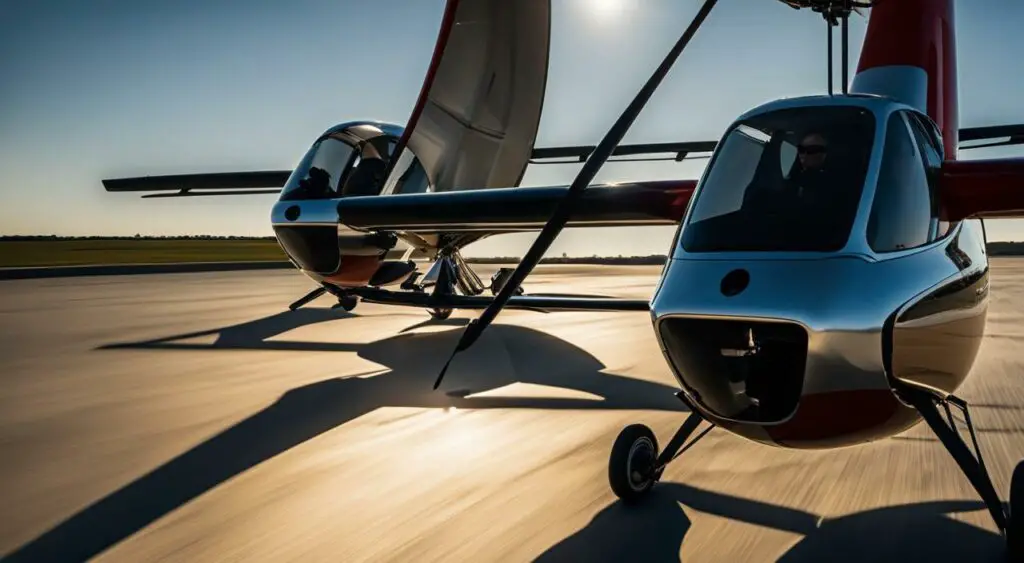
In order to understand how a gyrocopter operates, it is important to understand the basic principles of rotorcraft.
Gyrocopters are able to fly due to the lift generated by a rotor system, which consists of a horizontal rotor and a vertical propeller.
The rotor system is responsible for providing lift, while the propeller is responsible for propulsion.
The rotor system of a gyrocopter consists of a freely turning rotor that is not powered by a motor, but instead turns as a result of airflow from the forward movement of the aircraft.
This airflow, known as autorotation, generates lift that allows the gyrocopter to stay aloft.
The rotor is able to maintain its speed through horizontal movement, which is achieved by tilting the rotor system forward or backward using a control mechanism.
The propeller is located behind the rotor system and provides forward thrust to move the gyrocopter through the air.
The propeller is powered by an engine and controlled through the aircraft’s flight controls. Flight control of a gyrocopter is achieved through adjustments to the pitch and roll of the rotor blades.
Pitch changes are achieved through adjustments to the collective pitch control, which changes the pitch of all rotor blades simultaneously.
Roll changes are achieved through adjustments to the cyclic pitch control, which changes the pitch of individual blades as they rotate around the rotor system.
The rotor and propeller system of a gyrocopter work together to maintain stability and maneuverability in flight. The rotor system provides lift and directional control, while the propeller provides forward thrust.
The combination of these two systems allows gyrocopters to perform a variety of aerial maneuvers with precision and efficiency.
“Gyrocopters use the principles of rotorcraft to achieve flight. By utilizing a rotor system for lift and a propeller for propulsion, gyrocopters are able to maneuver through the air with ease.”
Gyrocopter flight control is achieved through the use of a collective pitch control and cyclic pitch control. The collective pitch control adjusts the pitch of all rotor blades simultaneously.
While the cyclic pitch control adjusts the pitch of individual blades as they rotate around the rotor system. These controls allow for precise adjustments to the lift and direction of the gyrocopter in flight.
Gyrocopter Design Fundamentals: Components and Controls
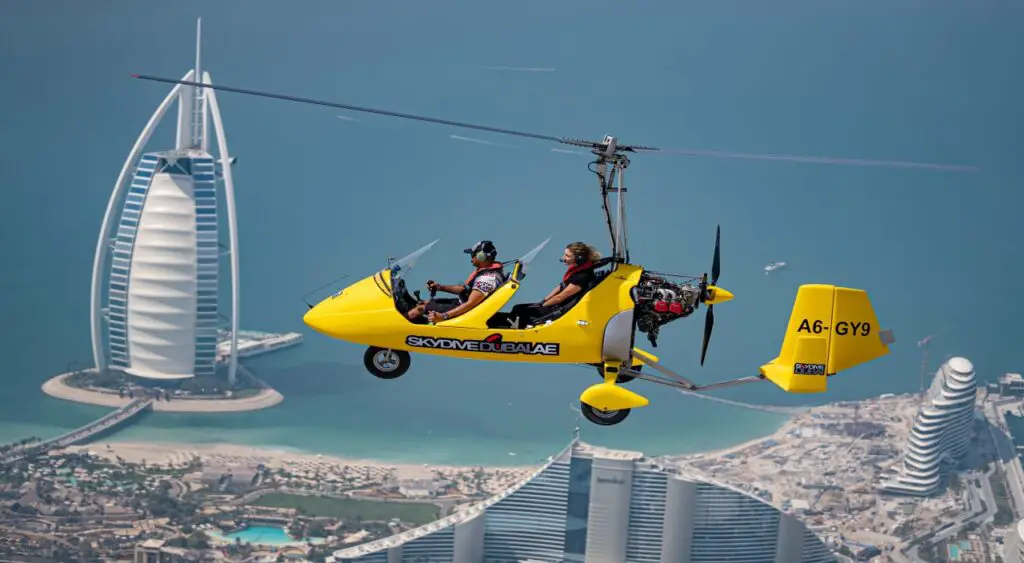
In order to understand how a gyrocopter works, it is important to become familiar with its various components and controls. A gyrocopter’s design is crucial to its functionality and maneuverability.
Gyrocopter components: The key components of a gyrocopter include the rotor, engine, cockpit, and landing gear.
The rotor is the most distinctive component of a gyrocopter and is responsible for generating lift through rotation. The engine provides propulsion for the gyrocopter to move forward.
The cockpit is where the pilot sits and controls the gyrocopter, while the landing gear helps to keep the gyrocopter stable on the ground.
Gyrocopter flight controls: Gyrocopter flight controls include the cyclic, collective, and rudder pedals.
The cyclic controls the direction and bank angle of the gyrocopter, while the collective adjusts the rotor pitch to control lift. The rudder pedals control the gyrocopter’s yaw and help to maintain directional stability.
Gyrocopter rotor blade: The rotor blade is a critical component of a gyrocopter’s design. It is responsible for generating lift as the rotor spins. The blade’s angle of attack determines the amount of lift generated, and it is controlled by the collective.
In summary, the components and controls of a gyrocopter work together to enable flight. The rotor generates lift, the engine provides propulsion, and the cockpit and flight controls allow the pilot to control the gyrocopter’s movement.
Understanding the design fundamentals of a gyrocopter is essential to unlocking the secrets of how it works.
Gyrocopter Aerodynamics: Lift and Maneuverability

Understanding the aerodynamics of gyrocopters is essential to comprehend how they fly. Gyrocopter flight is based on the principle of autorotation, which means that when the rotor blades turn, they create lift by creating a spinning column of air above them.
This spinning column of air creates a low-pressure area above the rotor blades, which lifts the gyrocopter off the ground.
The amount of lift generated depends on several factors such as the rotor blade length, speed of rotation, angle of attack, and airfoil shape. One of the significant advantages of gyrocopters is their excellent maneuverability.
Unlike traditional helicopters, the rotor blades of a gyrocopter are not powered, and their direction of motion is entirely dependent on the relative wind.
As a result, gyrocopters can make tight turns and handle sudden changes in direction with ease. The maneuverability of gyrocopters is also enhanced by their ability to adjust the angle of the rotor blades in-flight.
By tilting the rotor blades forward, backward, or sideways, a pilot can control the direction of the gyrocopter’s flight. The gyrocopter’s vertical stabilizer, which is mounted on the tail, plays a crucial role in maintaining balance during flight.
It prevents the gyrocopter from spinning uncontrollably and provides directional stability. Overall, gyrocopter aerodynamics rely on a delicate balance of forces to generate lift and enable maneuverability.
By understanding these principles, pilots can safely and effectively operate gyrocopters in a wide range of flight conditions.
Gyrocopter Flight Principles: Lift, Propulsion, and Controls
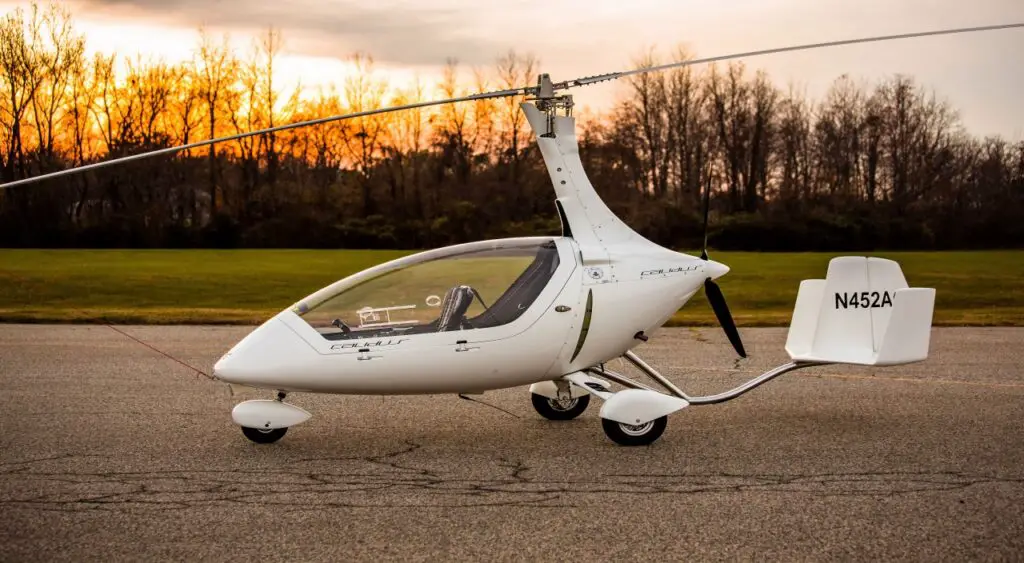
In order to understand how a gyrocopter operates, it is important to examine the principles that enable its flight capabilities.
These flight principles are a result of the synergy between three main components: lift, propulsion, and control.
Gyrocopter Lift
Lift is generated by the rotor of the gyrocopter, which rotates as a result of the forward momentum of the aircraft.
As the rotor spins, air is pushed down, creating an upward force that counteracts the downward force of gravity, enabling the gyrocopter to remain aloft.
The angle of attack of the rotor blades determines the amount of lift generated. By changing the angle of attack, the pilot can control the altitude of the gyrocopter.
The pitch control of the rotor blade is used to change the angle of attack.
Gyrocopter Propulsion
The propulsion of a gyrocopter is achieved through a pusher propeller located behind the rotor. As the propeller rotates, it creates a forward thrust that propels the gyrocopter forward.
The speed of the gyrocopter is controlled by adjusting the pitch of the propeller blades.
Gyrocopter Controls
The controls of a gyrocopter consist of three main components: the cyclic, the collective, and the rudder.
The cyclic control is used to change the pitch of the rotor blades, enabling the gyrocopter to move in different directions.
The collective control adjusts the pitch of all the rotor blades simultaneously, controlling the altitude of the gyrocopter. The rudder control is used to control the yaw of the gyrocopter, enabling it to turn left or right.
The pilot uses a combination of these controls to maneuver the gyrocopter in the air and perform various aerial maneuvers, such as hovering, takeoff, and landing.
“The synergy between lift, propulsion, and control enables the gyrocopter to achieve flight capabilities that are unique among aircraft.”
Gyrocopter Mechanics and Technology: An Inside Look

In this section, we take an in-depth look into the mechanics and technology behind gyrocopters. Gyrocopters have a unique design that sets them apart from other aircraft, making them a fascinating subject to study.
Understanding the mechanics of gyrocopters is crucial to comprehend their flight capabilities and advancements in aviation technology.
Gyrocopter mechanics refers to the various physical principles that govern the construction and operation of gyrocopters. The most fundamental principle is the use of a rotor to generate lift.
Unlike fixed-wing aircraft that rely on the forward motion of the plane to generate lift, gyrocopters use a rotor, which rotates vertically, creating lift and enabling flight.
Another key aspect of gyrocopter mechanics is that they are classified as rotorcraft. Rotorcraft are aircraft that use rotors instead of wings to provide lift.
In addition to gyrocopters, helicopters and autogyros are also classified as rotorcraft.
Rotorcraft technology has advanced considerably over the years, leading to the development of gyrocopters that are more efficient and effective than ever before.
Aviation technology has also played an essential role in the development of gyrocopters.
A wide range of aviation technologies, including lightweight materials, advanced avionics, and powerful engines, have made gyrocopters more reliable, safer, and more efficient.
Gyrocopters are a unique type of rotorcraft, and their mechanics and technology play a crucial role in their performance.
Studying the design and mechanics of gyrocopters can provide insights into the broader field of aviation engineering and advancements in rotorcraft technology.
Gyrocopter Auto-Rotation and Vertical Takeoff

Gyrocopter design incorporates unique features that enhance operational efficiency and versatility. Two such features are auto-rotation and vertical takeoff.
Auto-rotation is a flight maneuver where the rotor blades of a gyrocopter spin freely, without any power from the engine. This technique is employed in case of engine failure, allowing the gyrocopter to glide safely to the ground.
During auto-rotation, the rotor blades generate lift by utilizing the stored rotational energy of the rotor. This helps in slowing down the descent of the gyrocopter, allowing the pilot to make a controlled landing.
Gyrocopters are also capable of vertical takeoff, which enables them to take off and land from confined spaces. Unlike airplanes, gyrocopters do not require a runway for takeoff and landing.
They can simply lift off the ground vertically, using the rotor to generate lift. Vertical takeoff allows gyrocopters to operate in areas with limited space, such as small airstrips or helipads.
Gyrocopter Design and Principles: Enhancing Safety and Efficiency
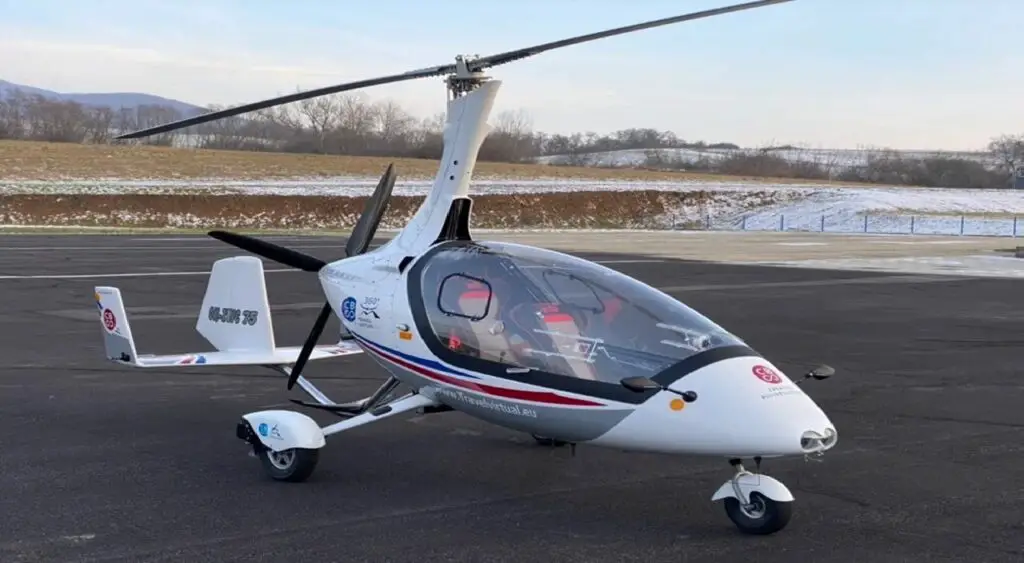
Gyrocopters have a unique design that contributes to their exceptional safety and efficiency in the air.
The use of a rotor as the primary lift-generating component enables gyrocopters to operate at lower speeds and altitudes than fixed-wing aircraft, making them ideal for low-level flying and close-range inspections.
The principles of gyrocopter flight also promote stability and control, enabling gyrocopters to maneuver with precision and ease.
The design of a gyrocopter includes several key components, such as the rotor, engine, and landing gear. The rotor is the most critical component of a gyrocopter, responsible for generating lift and stability during flight.
The blades of the rotor are designed to have a high degree of flexibility, allowing them to flap and feather according to the aerodynamic forces acting upon them.
The principles of gyrocopter flight are founded on the concept of autorotation, where the rotor continues to spin even if the engine fails.
This ability allows gyrocopters to land safely in the event of an engine failure, making them an ideal choice for emergency medical services and search and rescue operations.
Additionally, the rotor system provides a natural form of stability and control, making gyrocopters relatively easy to fly compared to other aircraft.
Gyrocopter flight controls include a joystick, pedals, and throttle, which the pilot uses to adjust the pitch, roll, and yaw of the gyrocopter.
These controls are designed to be intuitive and responsive, allowing for smooth and precise maneuvering.
Additionally, gyrocopters have unique capabilities, such as the ability to perform aerial maneuvers such as side-slips and steep turns, making them an ideal choice for aerial photography and surveying.
Gyrocopter Aerial Maneuvers
Gyrocopters are capable of performing a wide range of aerial maneuvers, owing to their unique design and flight principles.
One of the most impressive maneuvers is the autorotation landing, where the pilot uses the rotor’s stored kinetic energy to land the gyrocopter safely in the event of an engine failure.
This maneuver is highly effective and has saved many lives over the years.
Gyrocopters are also capable of performing steep turns, where the pilot banks the gyrocopter at a steep angle, allowing for tight turns and rapid changes in direction.
This maneuver is ideal for aerial photography and surveying, as it enables the gyrocopter to change direction quickly while maintaining a stable altitude and position.
Other aerial maneuvers that gyrocopters are capable of performing include side-slips, where the pilot uses the rudder to move the gyrocopter sideways while maintaining a stable altitude.
And chandelles, where the pilot executes a climbing turn followed by a descending turn, changing the direction of flight by 180 degrees.

Conclusion
Overall, understanding how a gyrocopter works requires a comprehensive understanding of the principles of aviation engineering, rotorcraft technology, and autogyro aerodynamics.
As this article has demonstrated, the unique design and operation of gyrocopters enable them to perform various aerial maneuvers, including vertical takeoff and auto-rotation, which enhance their operational efficiency and versatility.
Advancements in aviation technology have revolutionized the field of rotorcraft, and gyrocopters are no exception.
The use of innovative materials and technologies has contributed to the development of gyrocopters as efficient rotorcraft, with enhanced stability and maneuverability.
As the demand for more efficient and safer modes of transportation continues to grow, gyrocopters are poised to play an increasingly important role in the aviation industry.
By continuing to refine their design and principles, engineers can unlock even more potential for this remarkable aircraft.
FAQ
-
How does a gyrocopter work?
A gyrocopter works by utilizing a rotor and a fixed wing. The rotor provides lift, while the fixed wing helps with stability and control. As the rotor spins, it creates lift, allowing the gyrocopter to become airborne. The fixed wing then helps to provide additional lift and control during flight.
-
What is a gyrocopter?
A gyrocopter, also known as a gyroplane, is a type of rotary wing aircraft. It operates on the principle of autorotation, wherein the main rotor spins freely and generates lift independently of engine power. Unlike a traditional helicopter, a gyrocopter relies on forward motion to generate lift and maneuver.
-
How does a gyrocopter generate lift?
A gyrocopter generates lift through the rotation of its main rotor. As the rotor spins, it creates a pressure difference between the top and bottom surfaces of the rotor blades, resulting in lift. This lift allows the gyrocopter to become airborne and maintain flight.
-
What is the propulsion system of a gyrocopter?
The propulsion system of a gyrocopter typically consists of an engine and a propeller. The engine provides power to the propeller, which generates thrust to propel the gyrocopter forward. The combination of lift from the rotor and thrust from the propeller allows the gyrocopter to achieve controlled flight.
-
How are gyrocopters controlled during flight?
Gyrocopters are controlled during flight through a combination of rotor manipulation and traditional flight controls. By adjusting the pitch of the rotor blades, the pilot can control the lift and descent of the gyrocopter. Additionally, traditional flight controls such as the rudder, elevator, and ailerons are used to maneuver the gyrocopter.
-
What are the components of a gyrocopter?
The main components of a gyrocopter include the main rotor, fixed wing, engine, propeller, flight controls, and landing gear. The main rotor provides lift, while the fixed wing aids in stability and control. The engine and propeller provide propulsion, and the flight controls allow the pilot to maneuver the gyrocopter. The landing gear allows for takeoff and landing.
-
How does a gyrocopter achieve stability and maneuverability?
Gyrocopters achieve stability and maneuverability through a combination of design features and flight controls. The fixed wing helps to provide stability, while the rotor and propeller system allow for controlled flight. The flight controls, including the rudder, elevator, and ailerons, enable the pilot to manipulate the gyrocopter’s movement and achieve desired maneuvers.
-
What are the advantages of gyrocopters?
Gyrocopters offer several advantages over other aircraft. They have a relatively short takeoff and landing distance, making them suitable for operations in confined spaces. They also have the ability to perform vertical takeoff and landing. Additionally, gyrocopters are known for their stability and maneuverability, making them a popular choice for recreational flying and aerial surveillance.
-
How do gyrocopters handle engine failure?
In the event of an engine failure, gyrocopters have a unique feature called auto-rotation. During auto-rotation, the rotor continues to spin freely, generating lift even without engine power. This allows the pilot to safely glide and land the gyrocopter in the event of an engine failure.
-
Are gyrocopters safe to fly?
Gyrocopters are generally considered to be safe to fly when operated by trained and licensed pilots. They have a favorable safety record compared to other small aircraft. However, as with any form of aviation, proper maintenance, adherence to safety protocols, and pilot proficiency are important factors in ensuring safe gyrocopter operations.
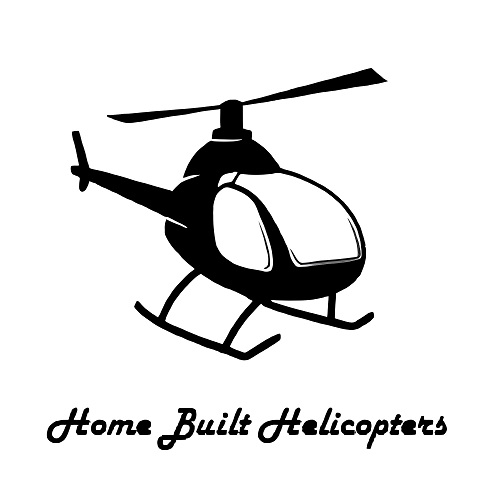
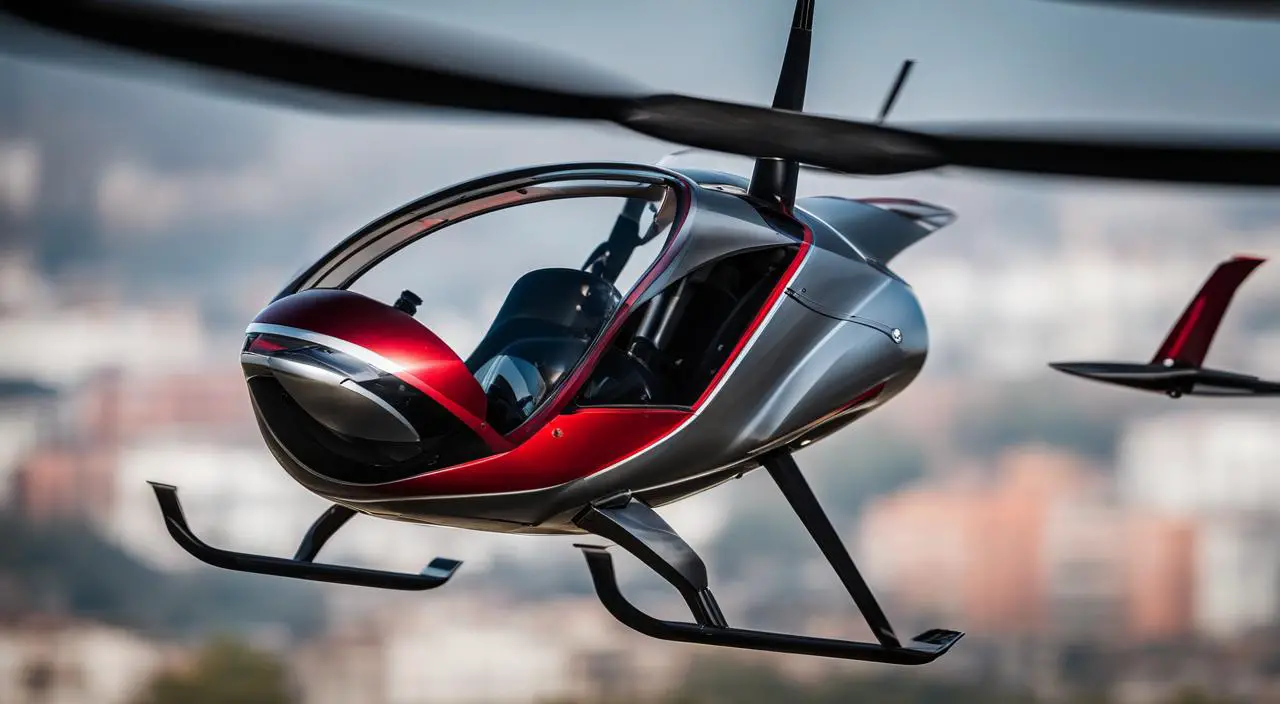
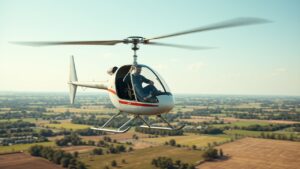

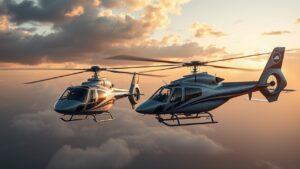
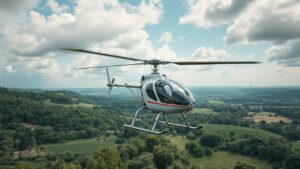


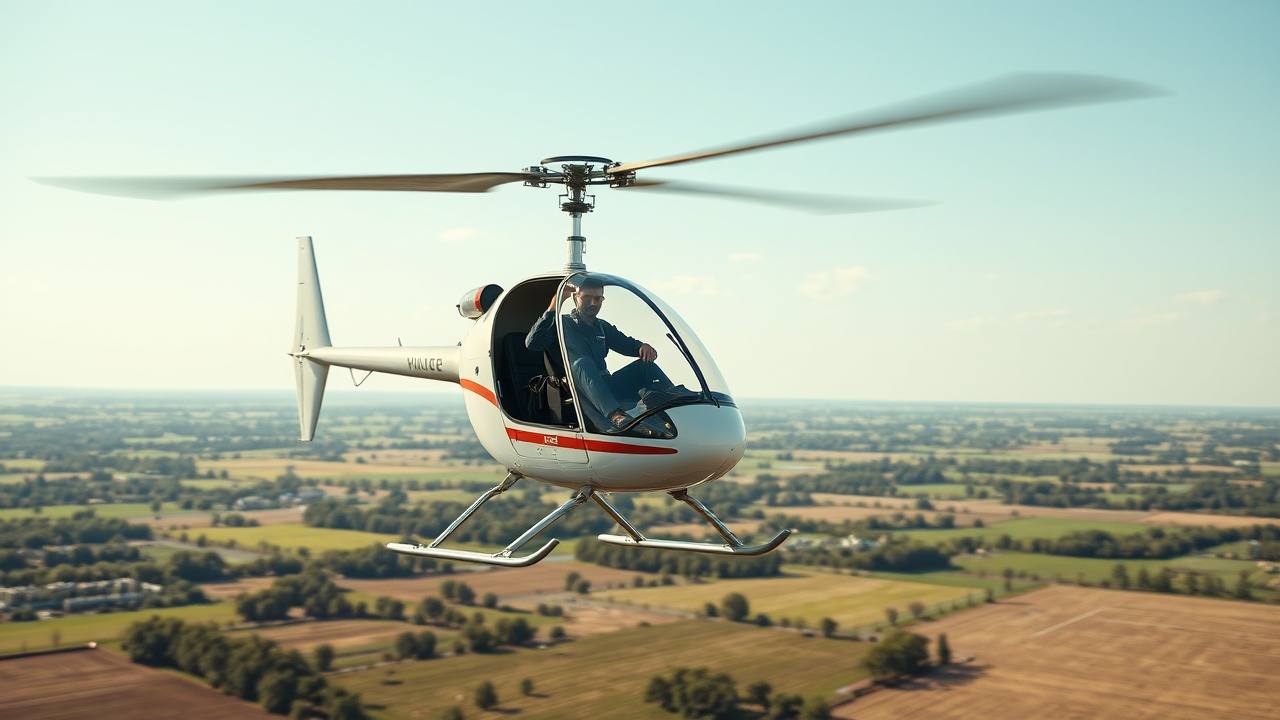
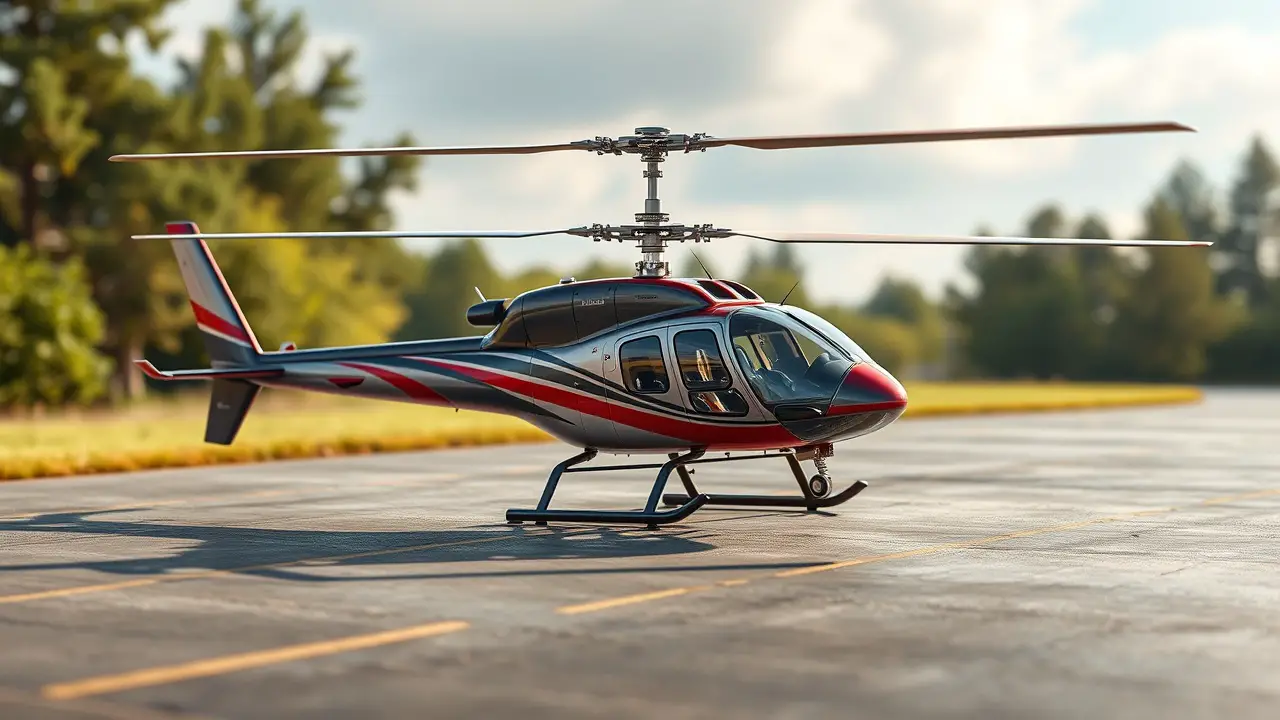
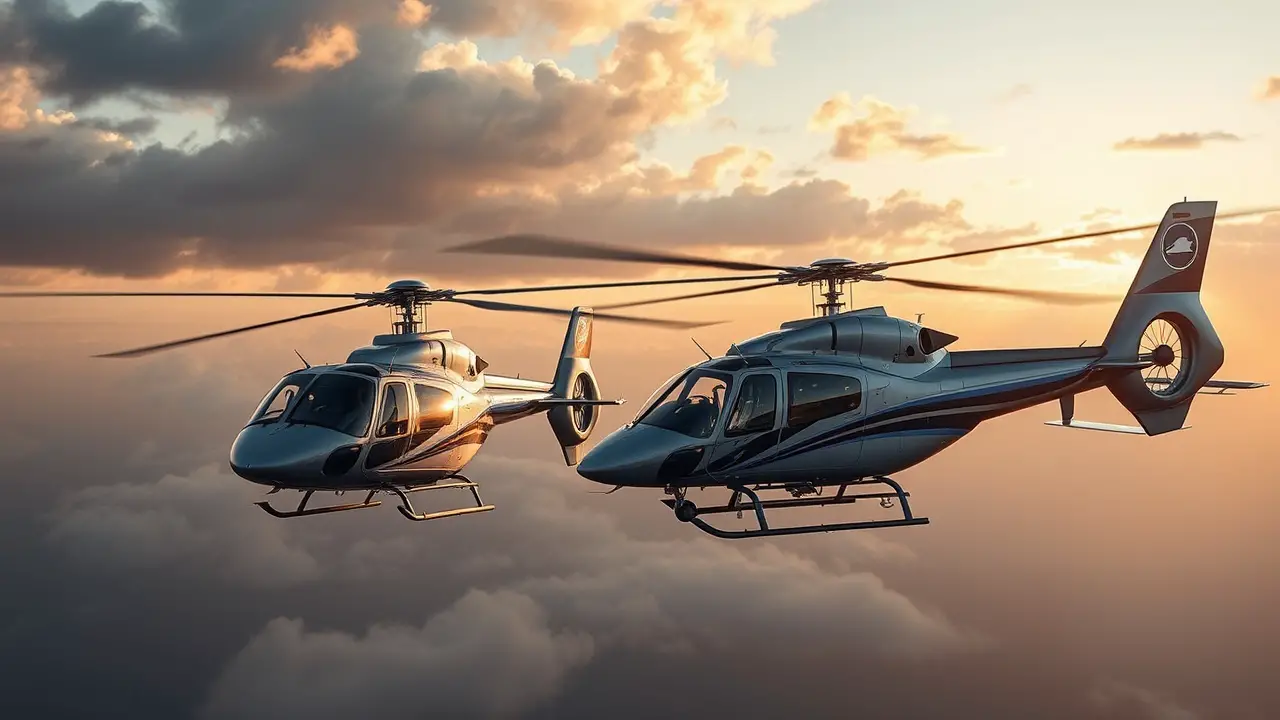
Leave a Reply